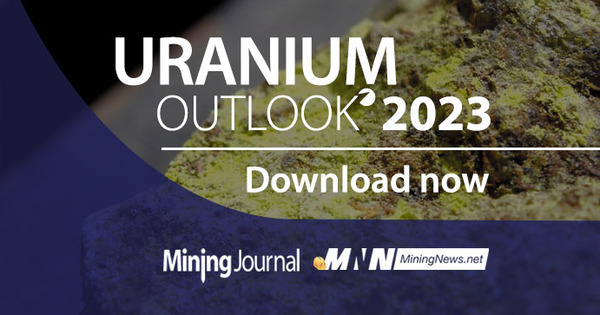Uranium Mining Sector Sees Remarkable Revival Amid Energy Transition
Uranium mining, which has languished in a decade-long slump following Japan’s 2011 Fukushima disaster, is experiencing an unprecedented resurgence as global factors align to dramatically shift the metal’s prospects.
Industry experts are now describing the current market conditions as historically favorable, with demand expected to significantly outpace supply in the coming years.
“I can honestly tell you the f
...
Uranium Mining Sector Sees Remarkable Revival Amid Energy Transition
Uranium mining, which has languished in a decade-long slump following Japan’s 2011 Fukushima disaster, is experiencing an unprecedented resurgence as global factors align to dramatically shift the metal’s prospects.
Industry experts are now describing the current market conditions as historically favorable, with demand expected to significantly outpace supply in the coming years.
“I can honestly tell you the fundamentals of the uranium market are the strongest I’ve seen in living memory,” declared Duncan Craib, CEO of Boss Energy, during his address at this year’s Diggers and Dealers conference in Australia. His assessment reflects a growing consensus among industry insiders that uranium has entered a new era of demand.
The remarkable turnaround can be attributed to several converging factors. Russia’s invasion of Ukraine has severely disrupted global energy markets, forcing many nations to reconsider their energy security strategies. With Russia controlling approximately 20% of the world’s uranium conversion capacity, Western utilities have been seeking alternative suppliers, creating new opportunities for miners outside Russian influence.
Simultaneously, the global push toward clean energy transition has rehabilitated nuclear power’s image. As countries struggle to meet ambitious carbon reduction targets, many are recognizing that renewable sources alone cannot provide reliable baseload power. Nuclear energy, with its minimal carbon footprint during operation, has consequently reentered policy discussions as a viable component of a diversified, low-carbon energy portfolio.
This renewed interest comes after a prolonged period of underinvestment in uranium mining infrastructure. Following Fukushima, uranium prices collapsed as countries like Germany announced nuclear phaseouts and Japan temporarily shuttered its reactor fleet. Prices fell from pre-Fukushima levels of around $70 per pound to below $20 at their lowest point, forcing many mines into care and maintenance and deterring new project development.
The consequences of this decade-long investment drought are now becoming apparent. Even as demand signals strengthen, the uranium mining sector faces significant challenges in ramping up production. New mines typically require 7-10 years from discovery to production, and many previously operating facilities require substantial capital to restart operations.
This supply-demand imbalance has already triggered price movements, with uranium spot prices more than doubling since their 2020 lows to exceed $50 per pound. Industry analysts project further increases as utilities scramble to secure long-term supply contracts in an increasingly competitive market.
The revival has been particularly noticeable in uranium mining hotspots like Kazakhstan, Canada, and Australia. In Kazakhstan, which produces over 40% of the world’s uranium, national operator Kazatomprom has indicated it will maintain production discipline rather than flooding the market. In Canada’s Athabasca Basin, companies like Cameco are working to restart idled operations like McArthur River, while Australian firms such as Boss Energy and Paladin Energy are advancing projects toward production.
Emerging markets are also showing increased interest in nuclear power. China has approved construction of new reactors as part of its decarbonization strategy, while countries including Poland, the Czech Republic, and the United Arab Emirates are either expanding or initiating nuclear programs. This widening geographic footprint of nuclear energy adoption further bolsters uranium’s long-term demand outlook.
For investors, uranium mining companies now present a compelling opportunity after years in the wilderness. The sector offers exposure to both the energy transition theme and energy security concerns, with a supply-constrained commodity underpinning potential share price appreciation.
However, challenges remain. Regulatory hurdles, public perception issues, and the technical complexity of uranium mining continue to present obstacles. Additionally, the specialized nature of the uranium market, with its relatively small number of buyers and complex contract structures, creates dynamics unlike those in other commodity markets.
To provide deeper insights into these market conditions and highlight key uranium mining projects worldwide, Mining Journal and Mining News.net have published their second annual Uranium Outlook report. The comprehensive analysis examines both the macroeconomic factors driving the uranium renaissance and the specific mining operations positioned to benefit from improving fundamentals.
As the global energy landscape continues its transformation, uranium’s role appears increasingly secure, marking a dramatic reversal of fortune for a sector that many had written off just a few years ago.


